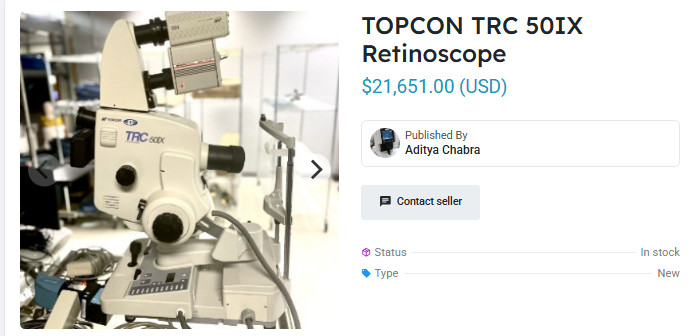Why Buy Used Ophthalmic Equipment?
Starting or upgrading an eye clinic can be expensive, especially when ophthalmic equipment costs thousands of dollars. Choosing used or refurbished devices can be a cost-effective way to save money without compromising quality. Many hospitals, clinics, and optical stores opt for pre-owned tools like slit lamps, phoropters, and auto-refractors to cut costs while maintaining efficiency.
Benefits of Buying Used Equipment
- Cost Savings – Purchasing second-hand ophthalmic devices can save 30-50% compared to new ones.
- Quality Refurbished Options – Many sellers recondition used equipment to ensure optimal functionality.
- Environmentally Friendly – Buying pre-owned reduces electronic waste and supports sustainability.
- Faster Availability – New equipment may have long delivery times, while used ones are usually ready to ship.
Things to Check Before Buying
Before purchasing used ophthalmic equipment, keep these factors in mind:
- Seller Reputation – Always buy from trusted resellers or verified online platforms. Check reviews and ratings.
- Condition & Warranty – Look for refurbished devices that come with a warranty or service guarantee.
- Calibration & Functionality – Ensure the device is tested and properly calibrated before purchase.
- Spare Parts Availability – Some older models may have limited spare parts, making repairs difficult.
- Return Policy – Always check if the seller offers a return or exchange policy in case of issues.
Where to Buy Used Ophthalmic Equipment
If you're looking for reliable sources to purchase pre-owned equipment, here are some options:
- Eyopto – A dedicated global platform for the eye industry where professionals buy and sell equipment.
- Vision Systems Inc. – Specializes in refurbished ophthalmic instruments with warranties.
- Lombart Instrument – One of the largest suppliers of used and new optometric devices.
- Marco Ophthalmic – Offers high-quality pre-owned ophthalmic tools.
- Ebay Medical Equipment – A marketplace where buyers can find deals on second-hand medical devices.
Red Flags to Avoid
- No Seller Transparency – If the seller refuses to provide a demo or test report, it's a red flag.
- Too-Good-To-Be-True Prices – Extremely low prices may indicate faulty or outdated equipment.
- No After-Sales Support – Always ask about servicing, warranties, and part availability.
Final Thoughts
Buying used ophthalmic equipment can be a great investment if done correctly. By purchasing from trusted sources, checking warranties, and ensuring proper calibration, you can save money without sacrificing quality. Always do thorough research and compare multiple options before making a final decision!





